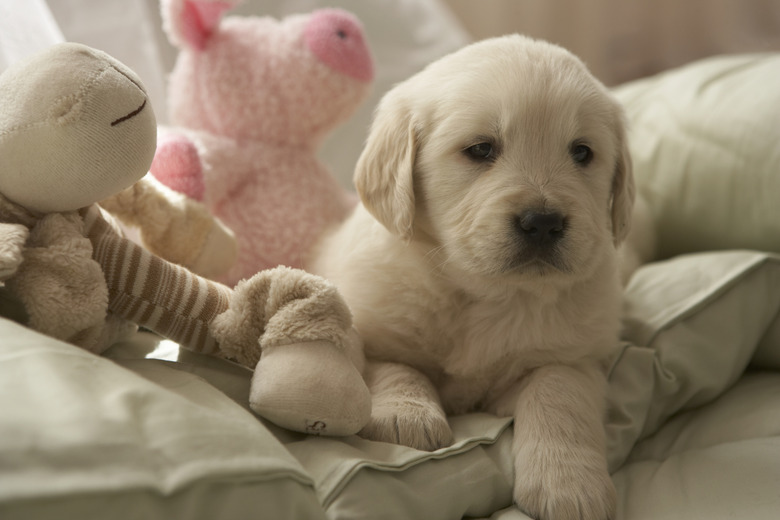Difference Between Natural Selection & Descent With Modification
Evolution is a combination of descent with modification and natural selection. Descent with modification is the evolutionary mechanism that produces change in the genetic code of living organisms. There are three mechanisms for such changes and the fourth mechanism, natural selection, determines which descendants survive to pass on their genes, based on environmental conditions. When people are aware of the four evolutionary mechanisms of evolutionary change, they can understand how evolution works and how humans and other animals have evolved from primitive living organisms.
TL;DR (Too Long; Didn't Read)
Living things change according to evolutionary principles, and there are four mechanisms of evolutionary change. Mutation is the process in which genes change randomly due to accidental damage or external factors. Genetic drift is the change in the frequency of particular genes due to random changes in the population. Migration is the change in the genetic pool due to shifting populations. These three mechanisms result in genetic evolutionary change and are defined as descent with modification because the descendants have a slightly changed genetic code due to one or several of the change mechanisms.
Natural selection is the fourth evolutionary mechanism, and it is the "survival of the fittest" process in which the organisms whose changes are best suited to their environment survive and reproduce while the others die or reproduce less.
How Descent With Modification Works
How Descent With Modification Works
The descent with modification definition is the passing on of the genetic code from parent to offspring with changes that are in turn hereditary. The three mechanisms that can change the genetic code of a population are mutation, migration and genetic drift. In each case, the offspring in the population will have slightly different genes than the parents and, as a result, will have different characteristics.
Mutation is the classic gene-changing process in which the offspring inherit changed genes due to mistakes in the gene copying process, broken chromosomes carrying the genes or external influences that damage genes. The offspring will have a slightly different genetic code than the parents, and they will therefore have new or changed features. For example, green beetle parents may experience a mutation and produce a brown beetle offspring.
Migration means that populations of species with different characteristics and slightly different genetic codes may migrate to mix and change the general population that existed before. For example, brown beetles of a certain type may migrate to join a population of green beetles. The resultant population will have a mix of brown and green beetles.
Genetic drift is a random change in the number of occurrences of a particular characteristic. For example, in a group of mixed green and brown beetles most of the brown beetles may have been on the side of the group close to a bird and might have been eaten. The population then has more green beetles.
These three mechanisms of evolutionary descent with modification result in genetic changes in populations over time. Natural selection completes the evolutionary process but operates slightly differently.
Modification by Natural Selection
Modification by Natural Selection
Darwin's theory of natural selection detailed how survival of the fittest gives direction to the random descent with modification process. Once the random changes of mutation, migration and genetic drift produce their results, natural selection makes sure that the changes that are passed on to subsequent generations are those most suited to living in the current environment of the species.
For example, if green and brown beetles live on the ground and green beetles are easier to see, birds might eat more green beetles than brown beetles. Eventually there will be mostly brown beetles in the population. If the ground turns green at this point, perhaps through climate change to a wet period, the birds will see the brown beetles and the few green beetles that are left will eventually become the majority as they are the best suited to survive in their new environment.
In this way, the random effects of descent with modification become the evolution of living things to adapt to their environment through natural selection. The changes resulting in better adaptation to the environment are passed on while the living things with changes that are not well-adapted don't survive.
Cite This Article
MLA
Markgraf, Bert. "Difference Between Natural Selection & Descent With Modification" sciencing.com, https://www.sciencing.com/difference-between-natural-selection-descent-modification-17942/. 30 July 2018.
APA
Markgraf, Bert. (2018, July 30). Difference Between Natural Selection & Descent With Modification. sciencing.com. Retrieved from https://www.sciencing.com/difference-between-natural-selection-descent-modification-17942/
Chicago
Markgraf, Bert. Difference Between Natural Selection & Descent With Modification last modified August 30, 2022. https://www.sciencing.com/difference-between-natural-selection-descent-modification-17942/
